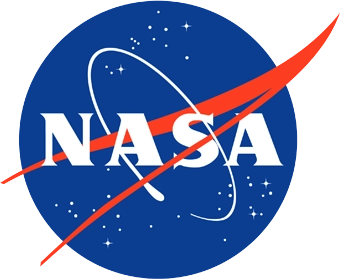Early Career Scientist Spotlight
Dr. Sumit Dahal (he/him/his)
Observational Cosmologist
Observational Cosmology Laboratory (665)
Did you always know that you wanted to study cosmology?
As a child, gazing at the night sky filled me with curiosity—I wondered how the stars and planets ended up where they were. At the time, I found answers in mythical creation stories. But during my undergraduate years, taking cosmology classes and reading works by Stephen Hawking and Steven Weinberg opened my eyes to a different perspective. I realized that understanding the universe's origin story—and our place within it—was no longer confined to myths and thought experiments. I became fascinated by empirical cosmology research, particularly experiments led by some of the most innovative scientific minds. Toward the end of my undergraduate studies, I had the opportunity to work in a lab—1.4 km underground—operating the XENON100 dark matter experiment. That hands-on experience with experimental physics reinforced my interest in building instruments to investigate some of the most fundamental questions about our universe.

Credit: Sumit Dahal.
What is your research focus?
I build telescopes to explore the origins and evolution of our universe. Because the early universe radiates most strongly at millimeter to far-infrared wavelengths, I develop instruments capable of making highly sensitive measurements in this range. Atmospheric emission—particularly strong oxygen and water lines in the frequency spectrum—poses a significant challenge for observations at these wavelengths. To mitigate these effects, the telescopes I work on are deployed in carefully chosen environments: the Cosmology Large Angular Scale Surveyor (CLASS) operates from a dry and high-altitude site in the Atacama Desert, the Primordial Inflation Polarization ExploreR (PIPER) and the EXperiment for Cryogenic Large-Aperture Intensity Mapping (EXCLAIM) are balloon-borne experiments, and the PRobe far-Infrared Mission for Astrophysics (PRIMA) is designed for space. Across all these platforms, achieving the required sensitivity relies on arrays of superconducting detectors cooled to below 0.1 K. My research primarily focuses on designing, assembling, and characterizing these detector arrays.
What research accomplishment are you most proud of?
In 2015, when I started my graduate studies at Johns Hopkins, the CLASS telescope site in the Atacama Desert was still under construction. Just four years later, we had three telescopes in place, surveying the southern sky every day across all four CLASS frequency bands to study radiation from the earliest moments of our universe. It was an incredible achievement made possible by the dedication of an exceptional team that I was fortunate to be a part of. On a personal level, I began grad school with little knowledge of how superconducting detectors worked. By the time I graduated in 2020, I had led the testing, assembly, and deployment of two CLASS detector arrays. That journey—from learning the fundamentals to playing a key role in getting detectors on the sky—was deeply rewarding. As a fun surprise, Forbes later included me in their "30 Under 30" list in recognition of this work.

Credit: Forbes Asia.
Tell us about the research projects you are currently working on.
Currently, I am working on PRIMA, a far-infrared observatory being developed for the next decade. PRIMA is a cryogenically cooled 1.8-meter space telescope designed to address fundamental questions about the evolution of galactic ecosystems, the origins of planetary atmospheres, and the buildup of dust and metals over cosmic time. The combination of a cold telescope (4.5 K) and 12,000 superconducting detectors provides PRIMA with the high sensitivity needed to peer into the hearts of dusty and obscured sources in our universe. My work focuses on developing two key subsystems for PRIMA: (1) silicon lenslet arrays to efficiently couple incident radiation from the telescope's fore-optics onto the detectors, and (2) low-power, space-qualified readout electronics capable of reading out 1,000+ detectors over a single pair of coaxial cables.

Credit: Spacecraft: NASA/JPL-Caltech; Background: ESO/S. Brunier.
What does a typical day at work look like for you?
When I am in the lab, I am usually working on a cryostat to test a detector or its readout electronics. In my office, you'll likely find me analyzing data in Python or designing instrument components in SolidWorks. And of course, like everyone else, I am somehow always in meetings.
What aspect of your work excites you the most?
When I step back and think about the big picture, I am building instruments that can bring us closer to answering some of the most profound questions: How did it all begin? How did we get here? It's mind-blowing that while we, as humans, occupy an infinitesimally small place in this vast universe, we've developed tools capable of looking back in time to witness the formation of the very first elements. The fact that we can actually observe the universe's earliest moments is just incredible!

Credit: Sumit Dahal.
What do you like to do in your free time?
I enjoy spending time outdoors, especially playing soccer. When I am indoors, my cat (Bailey) runs the show—I just live in his universe.
Biography
Home Town:
Kathmandu, Nepal
Undergraduate Degree:
B.Sc. in Physics and Mathematics, New York University Abu Dhabi, Abu Dhabi, UAE
Post-graduate Degrees:
Ph.D. in Physics and Astronomy, Johns Hopkins University, Baltimore, MD, USA

Photo Credit: David Friedlander
Link to Sumit Dahal's GSFC Bio
